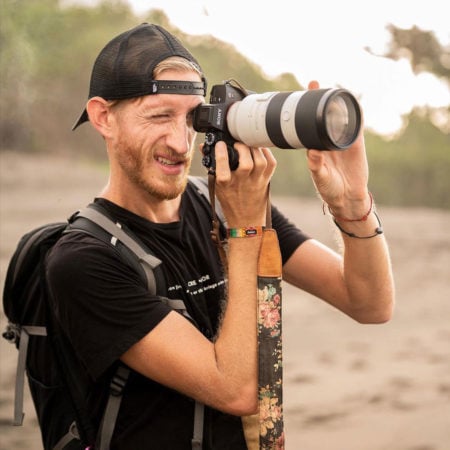The Broke Backpacker is supported by you. Clicking through our links may earn us a small affiliate commission, and that's what allows us to keep producing free content 🙂 Learn more.
Yellowstone National Park should be a world wonder, this place is absolutely insane! Inaugurated in 1872 as the first national park in the US, there are over 2,000,000 acres of pristine wilderness to discover here.
And they pack a bunch of hiking trails, too, which makes it possible to cover the greatest hits up close and personal: the iridescent Grand Prismatic Spring, the Old Faithful, and the jaw-dropping Grand Canyon of the Yellowstone.
Roads can only take you so far… And as challenging as it may get, there’s nothing more rewarding than hiking your way up to a mind-blowing viewpoint.
The problem? Yellowstone is a massive place. It might be tough to know where to start.
Our guide to hiking in Yellowstone is bound to give you the tools you need to prepare for your trip. We’ll talk safety, run you through the best hikes in Yellowstone, and give you some extra tips on what to expect.
You’re gonna have a killer time!

Do You Want to Travel FOREVER??
Pop your email in below to get a FREE copy of ‘How to Travel the World on $10 a Day!’.
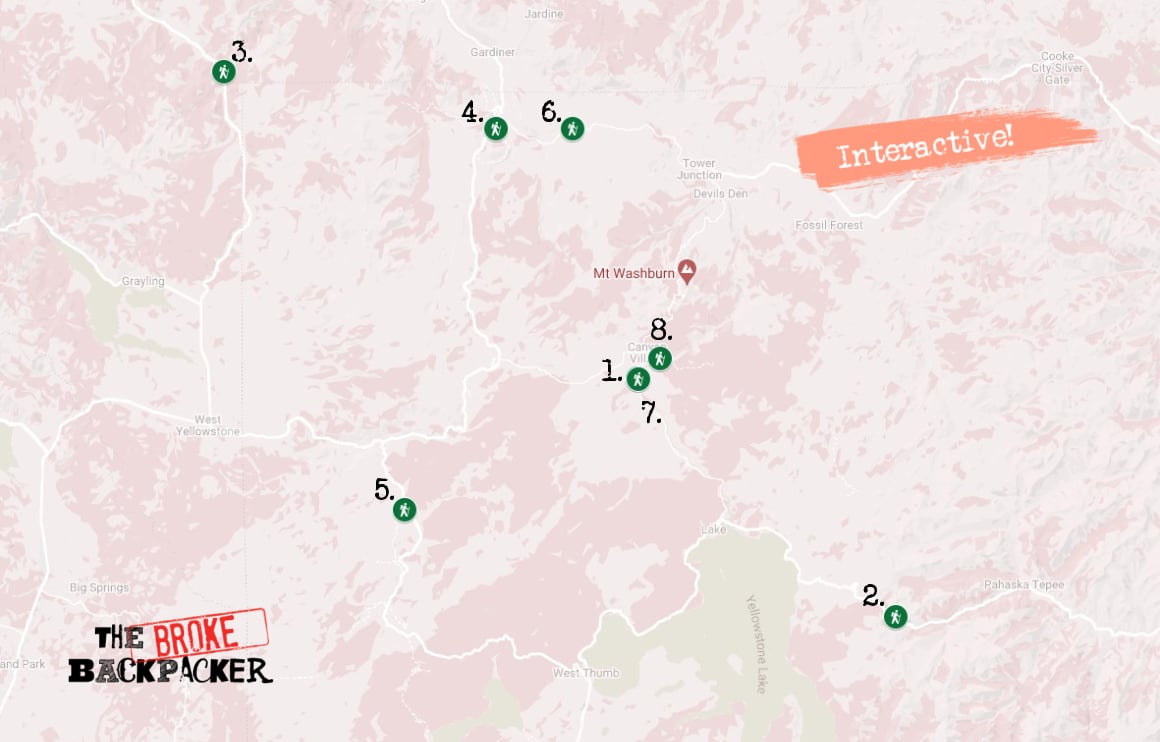
The Broke Backpacker is supported by you. Clicking through our links may earn us a small affiliate commission, and that's what allows us to keep producing free content 🙂 Learn more.
Yellowstone is the original (and some might say the best) national park in the United States. It’s a wild and otherworldly place that you need to visit at least once in your life.
Its jaw-dropping canyons and Alpine forests are more than enough to impress, but it’s Yellowstone’s bubbling geysers that really steal the show.
Home to the world-famous Grand Prismatic Spring, alongside a chain of other glorious geothermal features and waterfalls, it’s the kind of place that you need to see in order to believe. And the best way to take it in all of its magnificence is by getting out on the trail!
There’s a selection of various hikes and trails that make the park fairly accessible. Easy and straightforward hikes, medium-level trails, and the crazy ones that will get you sweating your ass off for an epic view.
Being one of the best national parks in the USA, Yellowstone’s more well-trodden routes can be busy in peak season. Don’t let that put you off, though: there is always a way to avoid the crowds. Leaving early is one option, or you can take one of the off-the-beaten-track routes instead.
Most routes are well looked after and clearly signposted, and staying on them is crucial: the park’s management is keen for hikers to understand the risks of being exposed to geysers, hot spray, and the park’s wild bear population…
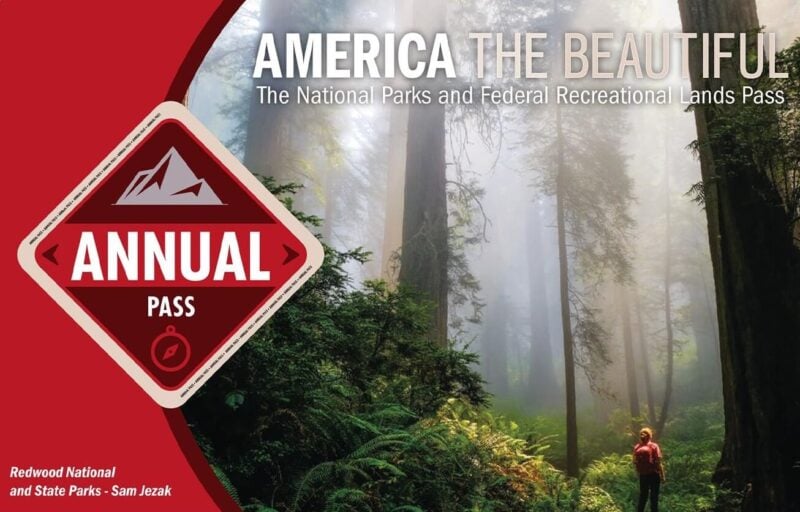
The USA is blisteringly beautiful. It’s also blisteringly expensive! Visiting two national parks in day can run you $70+ in entry fees.
Orrrr… you kick those entry fees to the curb, buy an annual ‘America the Beautiful Pass’ for $79.99, and get unlimited access to ALL 2000+ federally managed sites in the States totally FREE!
You do the math. 😉
Buy the Pass!Yellowstone Trail Safety
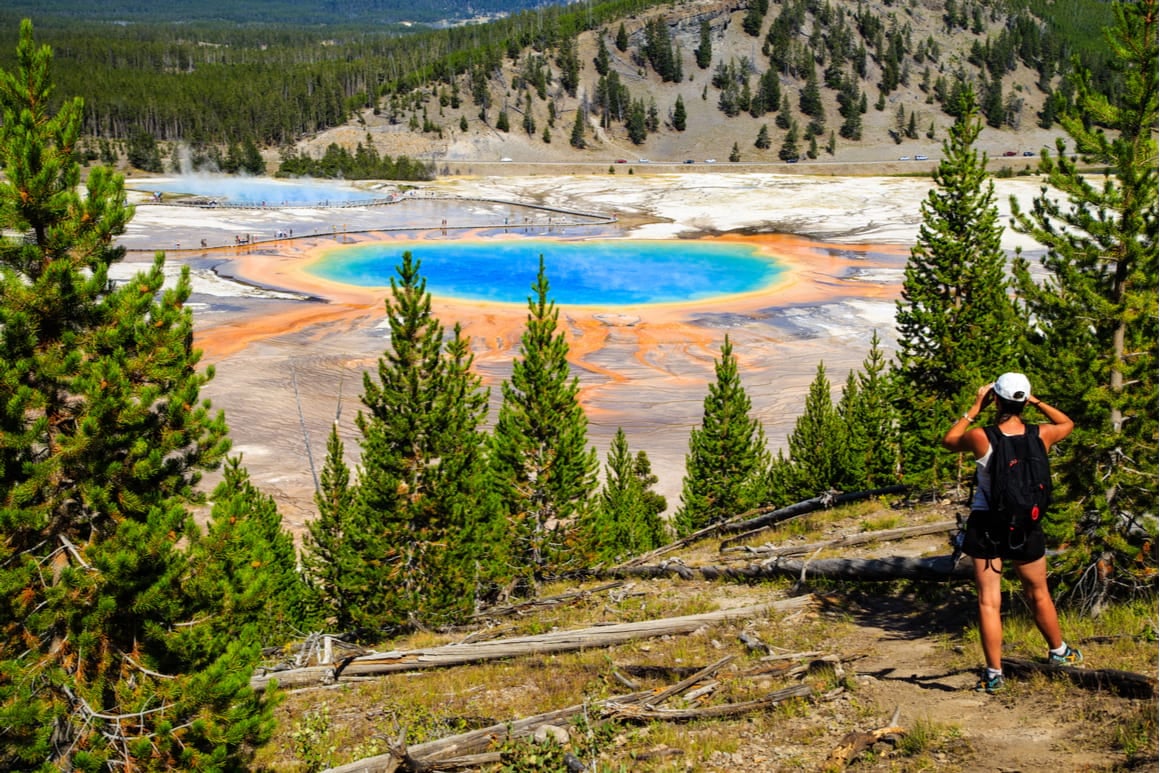
The volcanic landscape and bubbling geysers in Yellowstone are a magnet for hikers. Those who are looking for a challenge and want to immerse themselves in nature will have a ton to explore.
But, as enticing as the hikes in Yellowstone’s might be, it’s essential that you know how to protect yourself when in the park. Here’s what you need to know to stay safe and well in Yellowstone National Park:
- Don’t go wandering – Yellowstone’s trails and boardwalks are there for a reason. Leaving the path can not only endanger the delicate landscape, but also yourself.
- Be prepared for the weather – Check the forecast before attempting any hike. During winter, temperatures can drop and cause icy pathways and snowstorms. Summer brings scorching hot sunshine, so you’ll need to dress accordingly and bring plenty of water.
- Be mindful on the road – Traffic accidents are one of the more common causes of injury in Yellowstone. When driving, do not get distracted by passing animals and keep to the speed limit of 45 mph. The roads can also be winding, with sheer drops and potholes.
- Stay clear of the animals – There are a lot of wild animals in Yellowstone. If you come across them, keep away and do not approach. Stay at least 100 yards from bears and wolves and 25 yards from any others.
- Prepare for a bear encounter – Hike in a group, stay alert, make noise. Do not run and always carry bear spray. Read the official recommendations here.
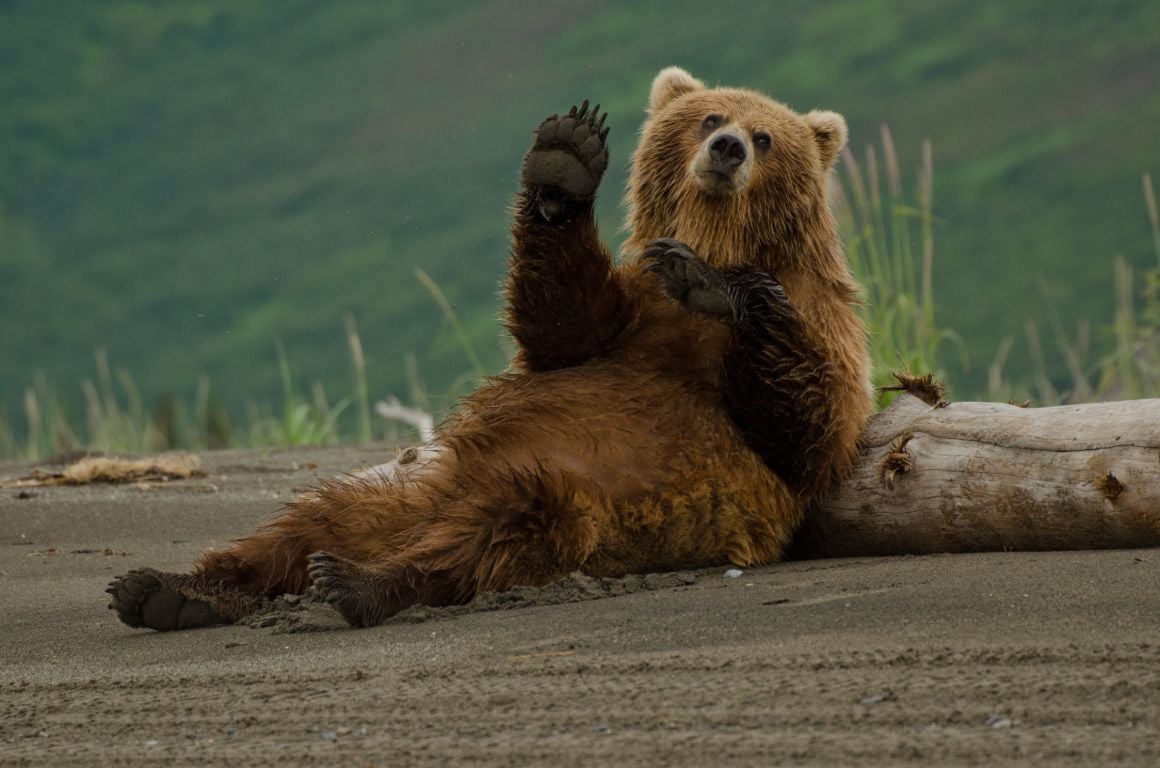
- Go old-school – You might not get phone signal on more remote areas, so bringing a solid GPS device, or even a physical map, can come in very handy.
- Don’t push too hard – Yellowstone is perfect if you’re looking for a challenging hike, but if you don’t feel like it when you’re out on the trail, please turn around. It’s dangerous to put yourself in a compromising situation, especially when far away from any sort of help.
- Hike with a buddy – It’s much safer to hike with at least one other person. If you decide to go alone, always let somebody know where you’re going.
- Get insured – Make the most of your adventure and get good travel insurance that covers the activities you’ll be doing — hiking! Waste no precious time worrying unnecessarily.
ALWAYS sort out your backpacker insurance before your trip. There’s plenty to choose from in that department, but a good place to start is Safety Wing.
They offer month-to-month payments, no lock-in contracts, and require absolutely no itineraries: that’s the exact kind of insurance long-term travellers and digital nomads need.
SafetyWing is cheap, easy, and admin-free: just sign up lickety-split so you can get back to it!
Click the button below to learn more about SafetyWing’s setup or read our insider review for the full tasty scoop.
Want a good deal? Be sure to pick up an ‘America, The Beautiful Pass‘, it’s $80 and gives you entrance to every National Park in the US for 12 months, plus a whole heap more!
The Top 8 Hikes in Yellowstone
Now that we’ve covered safety and a few of the basics, it’s time to move onto the best hikes in Yellowstone National Park.
We’ve split them into categories, to cater different goals and fitness levels, so have a look around and pick whichever sounds best to you!
- Canyon Rim North Trail to Inspiration Point – The Best Day Hike in Yellowstone
- Avalanche Peak Trail – Most Beautiful Hike in Yellowstone
- Sky Rim Trail – The Best Multi-Day Hike in Yellowstone
- Osprey Falls Trail – Must-Visit Hike in Yellowstone
- Grand Prismatic Hot Spring Loop – A Fun, Easy Hike in Yellowstone
- The Black Canyon of the Yellowstone Trail – The Toughest Trek in Yellowstone
- Artist Point Loop – Best Hike for Views in Yellowstone
- Seven Mile Hole Trail – Off the Beaten Path Trek in Yellowstone
Join our entrepreneurship retreat in Bali!

Ahoy friends, Will here! Introducing a very special project that involves YOU – An 8-day immersive experience in Bali, where I have been living for 7 years now.
If you’re passionate about freedom and designing your dream life, this is your chance to join like-minded folk on the same path and learn from my own wins, losses and lessons over my fifteen years of entrepreneurship, whilst soaking in the best of beautiful Bali.
Expect daily workshops, recharge practices, intention setting and fire ceremonies and perhaps a cheeky game of pool against myself, the one and only undefeated pool legend. All while experiencing the island’s best-kept secrets ?
1. Canyon Rim North Trail to Inspiration Point – The Best Day Hike in Yellowstone
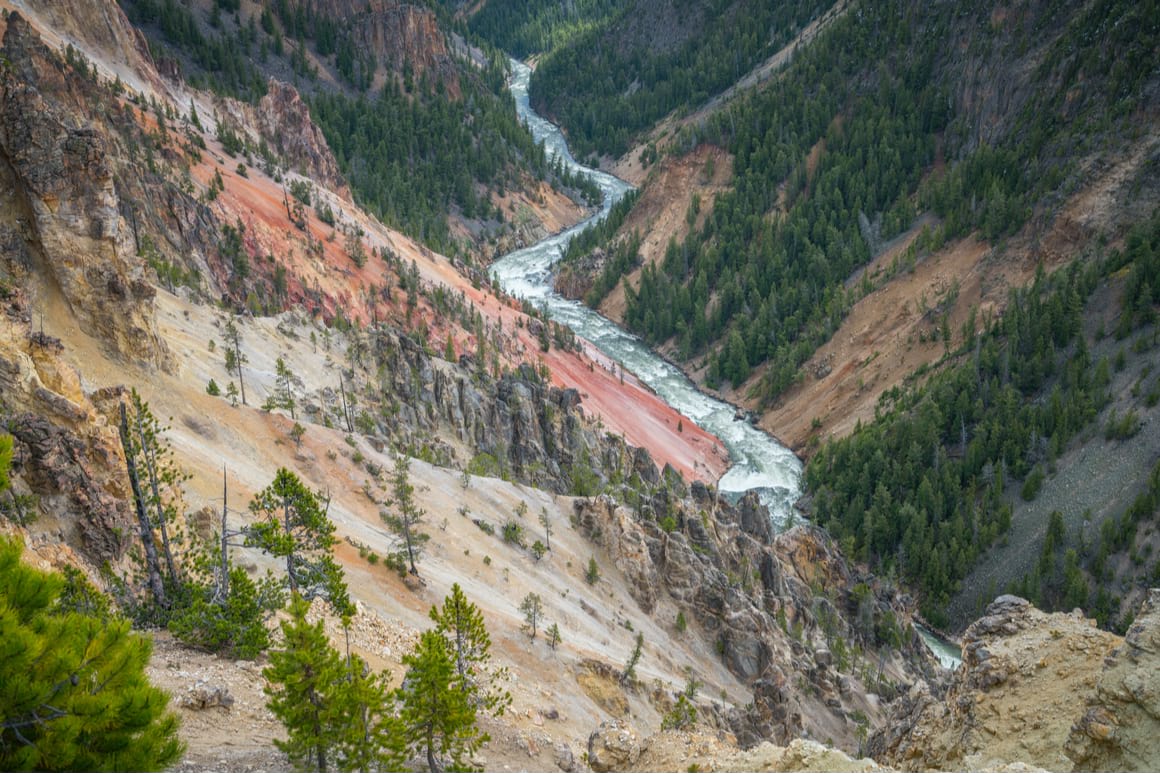
To kick things off, here’s a nice all-rounder of a hike. It’s a relatively easy one with a selection of great views!
You’ll start on the Grand Loop Road, tracing the route of the Yellowstone River for the most part. Eventually you’ll come across the Brink of the Lower Falls: a famed spot for photographing the falls themselves.
Continuing on the trail, you’ll go through spots like the Grand View along the way. Inspiration Point isn’t too far from here, too, and it’s got three different levels for all your viewing needs!
This hike is relatively easy and is mostly paved with benches, rest-stops, and bathrooms dotted along its course. Come early morning to beat the crowds.
- Length: 12.7km
- Duration: 3 hours
- Difficulty: Easy/Average
- Trailhead: North Rim Trail Head (44°42’29.7″N 110°30’11.1″W)
2. Avalanche Peak Trail – Most Beautiful Hike in Yellowstone
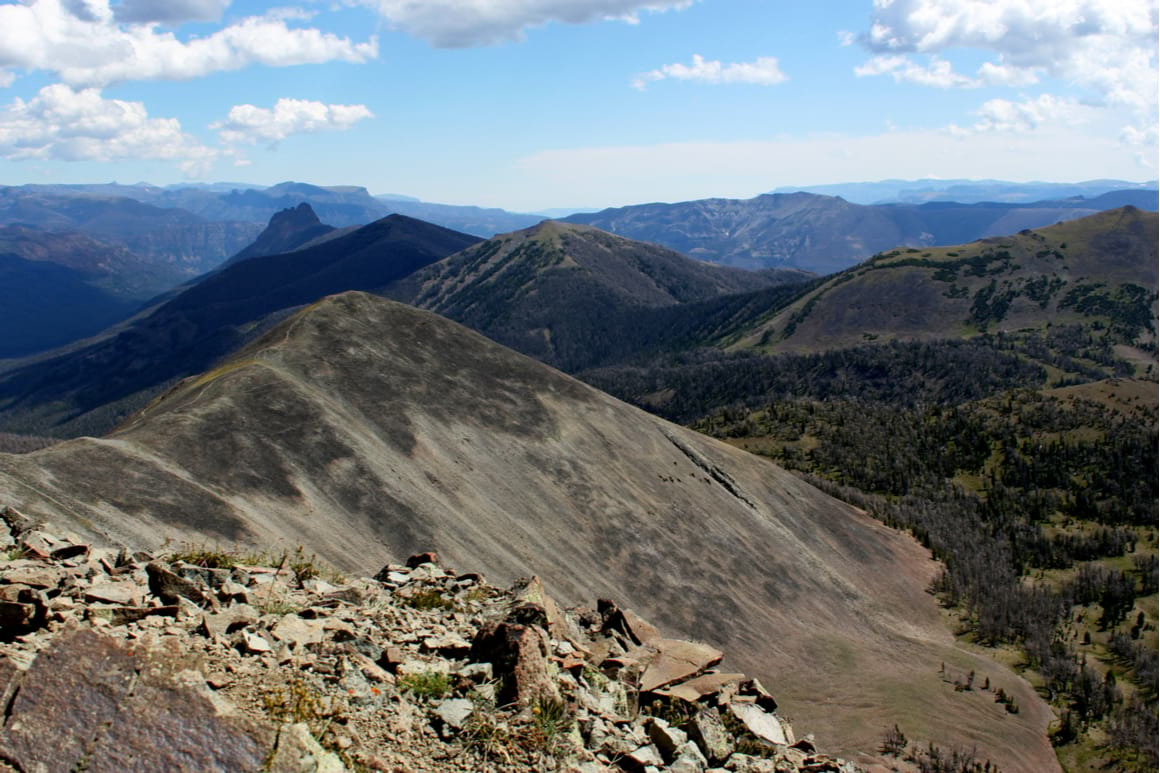
Even though most hikes in Yellowstone are incredibly beautiful, this one might take the win for us. The rugged mountain scenery and stark volcanic landscape make it feel worlds away from your “usual” Yellowstone hiking experience.
You’ll find the trailhead located close to Eleanor Lake, at the west end to be more precise. From here, the path from climbs straight uphill (2,000 feet up) for about 2 miles — brace yourself!
The trail starts through the forest. Then it meanders out into a lush meadow, where you’ll catch sight of the aptly named Top Notch Peak.
Eventually, the trail brings you into a kind of natural amphitheater. It’s at the top of this that you’ll find Avalanche Peak (the climb up is fairly strenuous, but totally worth it).
We reckon this could easily become your favorite hike in Yellowstone. You’re not likely to see many other people, and the hike itself is beautiful. The views of the high-altitude Yellowstone Lake backdropped by the mountaintops are simply incredible!
- Length: 7.5 km
- Duration: 3.5 hours
- Difficulty: Hard
- Trailhead: Eleanor Lake (44°28’14.7″N 110°08’32.5″W)

Wanna know how to pack like a pro? Well for a start you need the right gear….
These are packing cubes for the globetrotters and compression sacks for the real adventurers – these babies are a traveller’s best kept secret. They organise yo’ packing and minimise volume too so you can pack MORE.
Or, y’know… you can stick to just chucking it all in your backpack…
Get Yours Here Read Our Review3. Sky Rim Trail – The Best Multi-Day Hike in Yellowstone
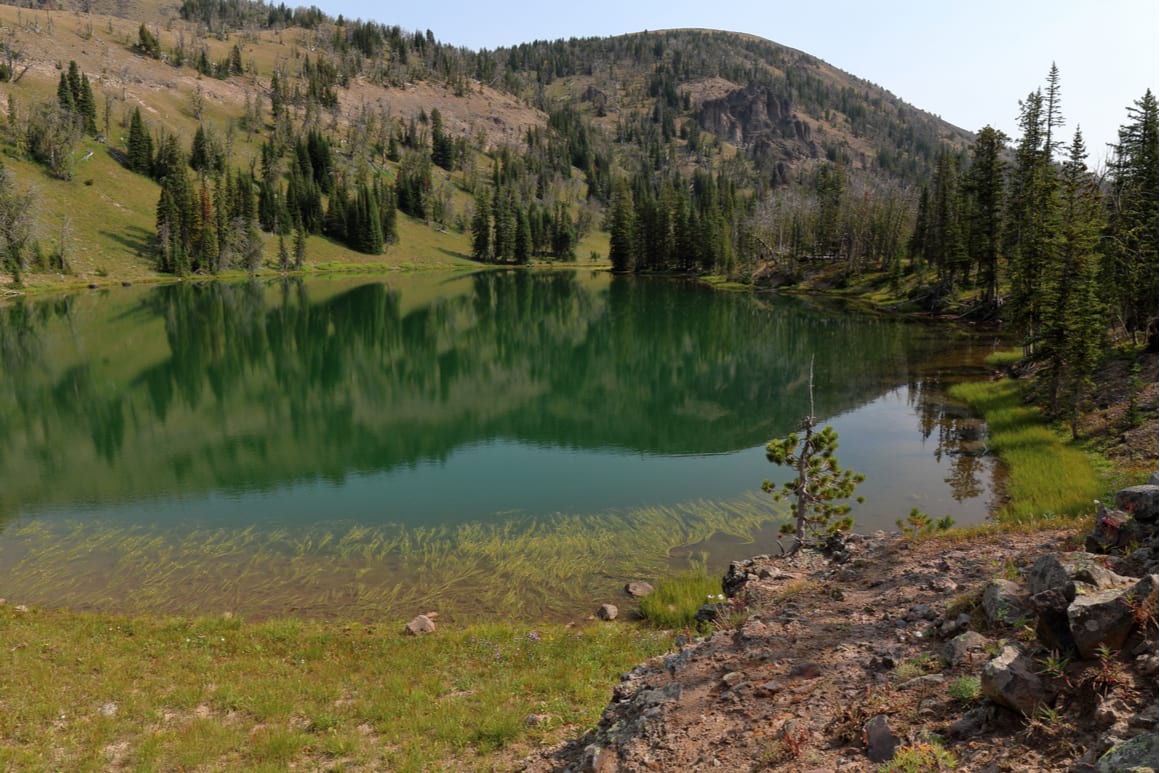
No, not that Skyrim. This Sky Rim is a trail with some pretty epic panoramic views of Yellowstone’s landscapes. You’ll be tracing the ridgeline of a mountain as you are immersed in the park’s spectacular scenery.
This is a quieter part of the park, so it’s a great hike for anybody looking to get off the beaten track — you’ll find some real peace and tranquillity here.
Start things off at the Specimen Creek Trailhead. You’ll find plenty of parking here for you and whoever else is in your convoy.
After following the trail around the creek itself, you’ll be treated with views of Meldrum Mountain before the trail begins to climb to Shelf Lake. This climb is pretty unrelenting, and definitely takes some level of fitness to tackle. But take a break if you need to!
You can choose to camp on the bank of Shelf Lake, if you like. However, there are numerous backcountry campsites along the route if you feel like breaking up your journey.
After this, trek onwards along the border between Yellowstone and the Gallatin National Forest. Expect views of various peaks in all directions — and be careful of drop-offs (they can be pretty precarious)!
- Length: 27 km
- Duration: 2 Days
- Difficulty: Difficult
- Trailhead: Specimen Creek Trailhead (45°00’45.0″N 111°04’51.2″W)
4. Osprey Falls Trail – Must-Visit Hike in Yellowstone
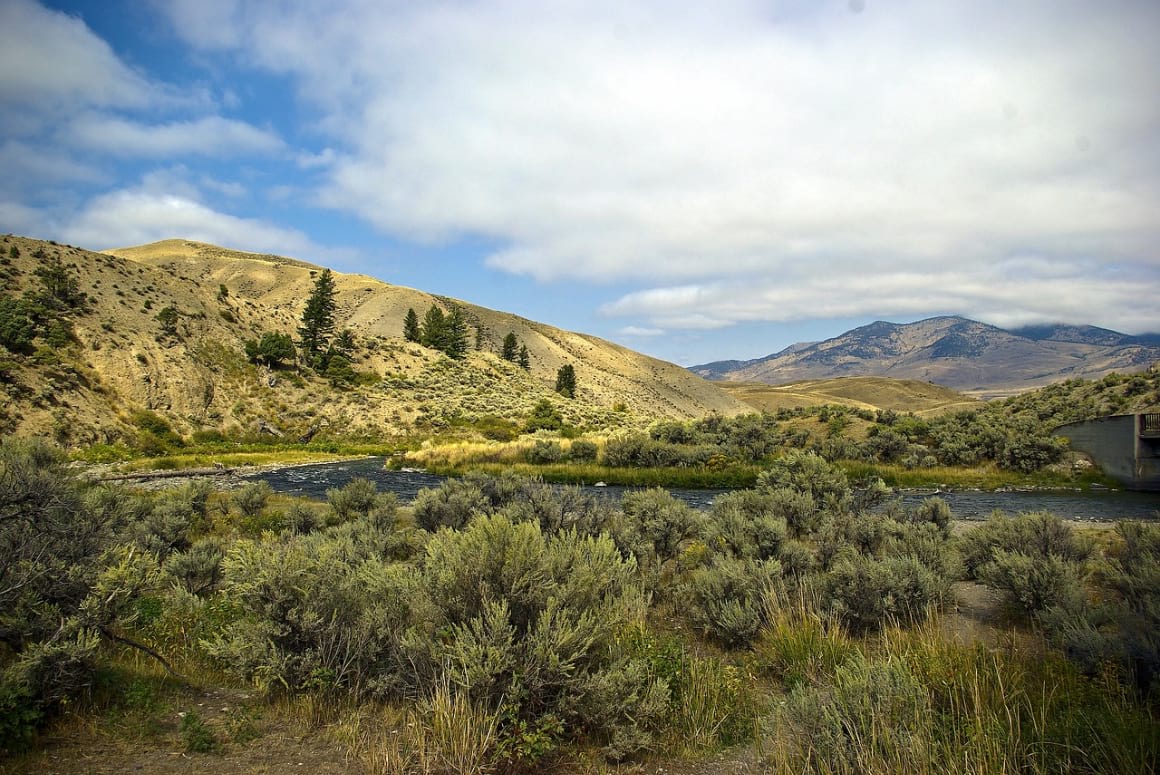
This one is a pretty popular hike in Yellowstone National Park, but that’s usually a good sign: it means there is something good to be seen.
This time, you’ll kick off at Yak Camp Road, where you’ll start hiking along an old road. It’s fairly flat to begin with, with wide expansive views. You’ll get to see elk grazing in meadows, among other natural scenes.
Soon the trail starts to get steep and narrow, as you follow switch-backs into the canyon. The view as you descend is impressive — you may even spot mountain goats and deer on your way down!
The grand finale is the descent to Osprey Falls itself. It’s a good place for a picnic, or just for a little refuel for the journey back up. Grizzlies have been reported in this area, so that’s something to bear in mind. Eheh 😉
- Length: 13.3 km
- Duration: 6 hours
- Difficulty: Average/Difficult
- Trailhead: Yak Camp Road (44°57’22.7″N 110°42’05.7″W)
5. Grand Prismatic Hot Spring Loop – A Fun, Easy Hike in Yellowstone
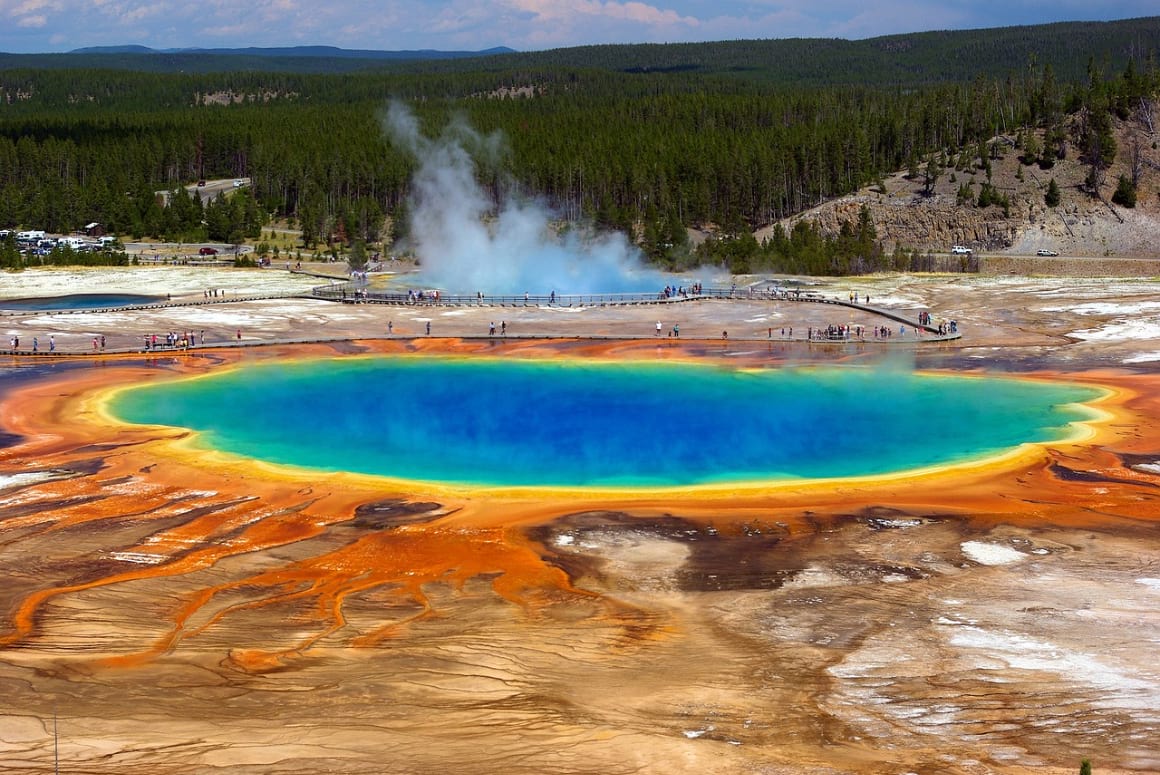
The Grand Prismatic Spring is easily one of the main highlights in Yellowstone. It’s the largest hot spring in the United States and the third-largest in the world.
This hike is an easy way to soak up the rainbow-colored spectacle — and the surrounding landscape, too. It consists of a short, winding trail along a gravelly, dusty path that’ll take you up to a look-out over the springs.
With other smaller hot spring pools and geysers on the way (even a cheeky waterfall), you’ve got a whole spectrum of watery wonders expecting you!
Tip: depending on when you go, the Grand Prismatic Spring will look different. Its colors are muted when it’s cooler, so going around noon will ensure prime spring action. It’ll be fairly busy though.
- Length: 2.5km
- Duration: 1.6 hours
- Difficulty: Easy
- Trailhead: Fountain Flat Drive (44°34’40.3″N 110°49’45.0″W)
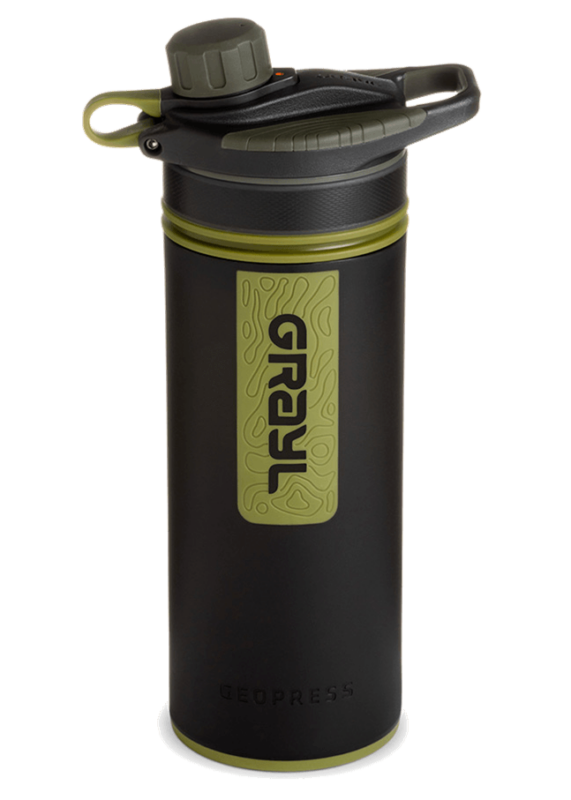
Drink water from ANYWHERE. The Grayl Geopress is the worlds leading filtered water bottle protecting you from all manner of waterborne nasties.
Single-use plastic bottles are a MASSIVE threat to marine life. Be a part of the solution and travel with a filter water bottle. Save money and the environment!
We’ve tested the Geopress rigorously from the icy heights of Pakistan to the tropical jungles of Bali, and can confirm: it’s the best water bottle you’ll ever buy!
View on REI Read the Review6. The Black Canyon of the Yellowstone Trail – The Toughest Trek in Yellowstone
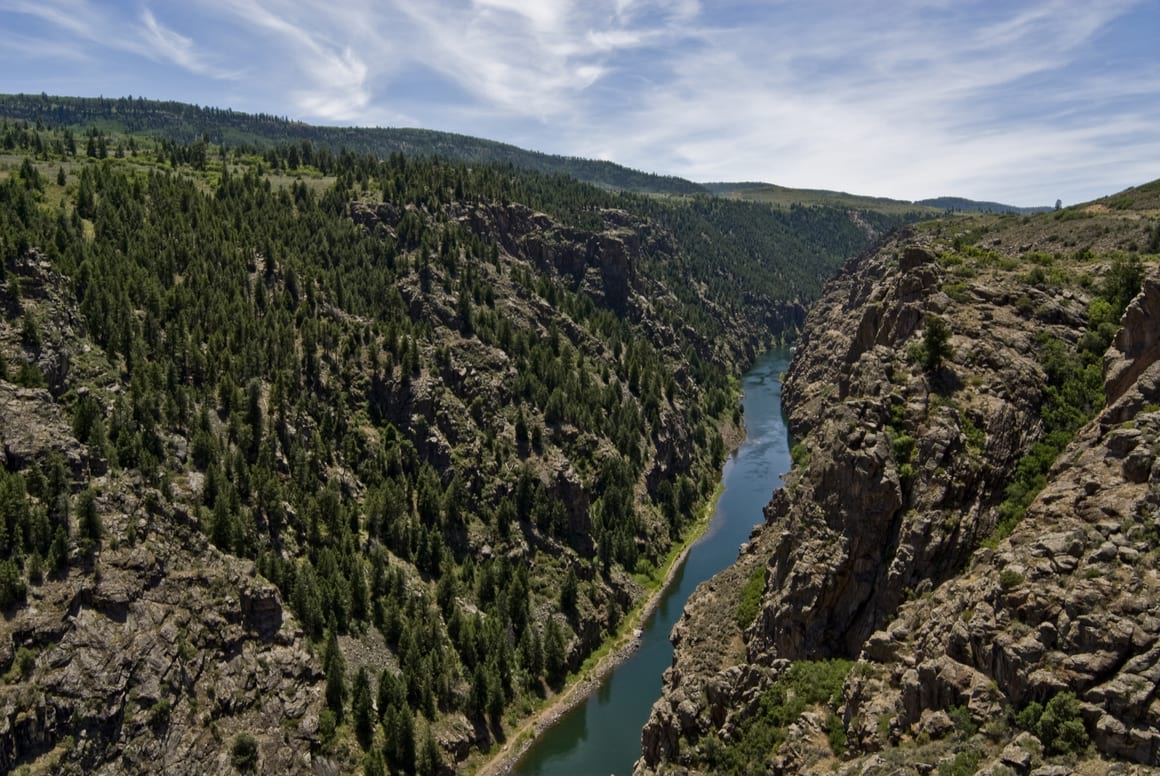
Get ready for the ultimate hike in Yellowstone National Park. It’s a challenging route, but a very rewarding one! If you’re looking for a real hiking challenge, then this is definitely the hike for you.
Hitting up the trail that winds its way around the Black Canyon of the Yellowstone, on the park’s northern boundary, is best done earlier on in the hiking season.
Following along the Yellowstone River, the canyon can only be accessed on horseback or on foot, which makes it feel very remote. Starting at the trailhead, the path descends to the river and then over one of the only suspension bridges in the park, high above the roaring water.
After crossing the Yellowstone River, you’ll be traversing the open sagebrush landscape, where you may catch sight of antelope and bison.
It’s possible to camp in the backcountry at Yellowstone, and campsites here are usually located along the river — you can even book some of them.
Day two boasts carved-out gorges and canyon views. You’ll trek all the way through this incredible landscape towards Hellroaring Trail, where you can take a shuttle back to where you started. You’ve got options to make this hike as long, or challenging, as you like!
- Length: 22.5 km
- Duration: 2-3 days
- Difficulty: Difficult
- Trailhead: Blacktail Creek Trailhead (44°57’20.3″N 110°35’37.9″W)
7. Artist Point Loop – Best Hike for Views in Yellowstone
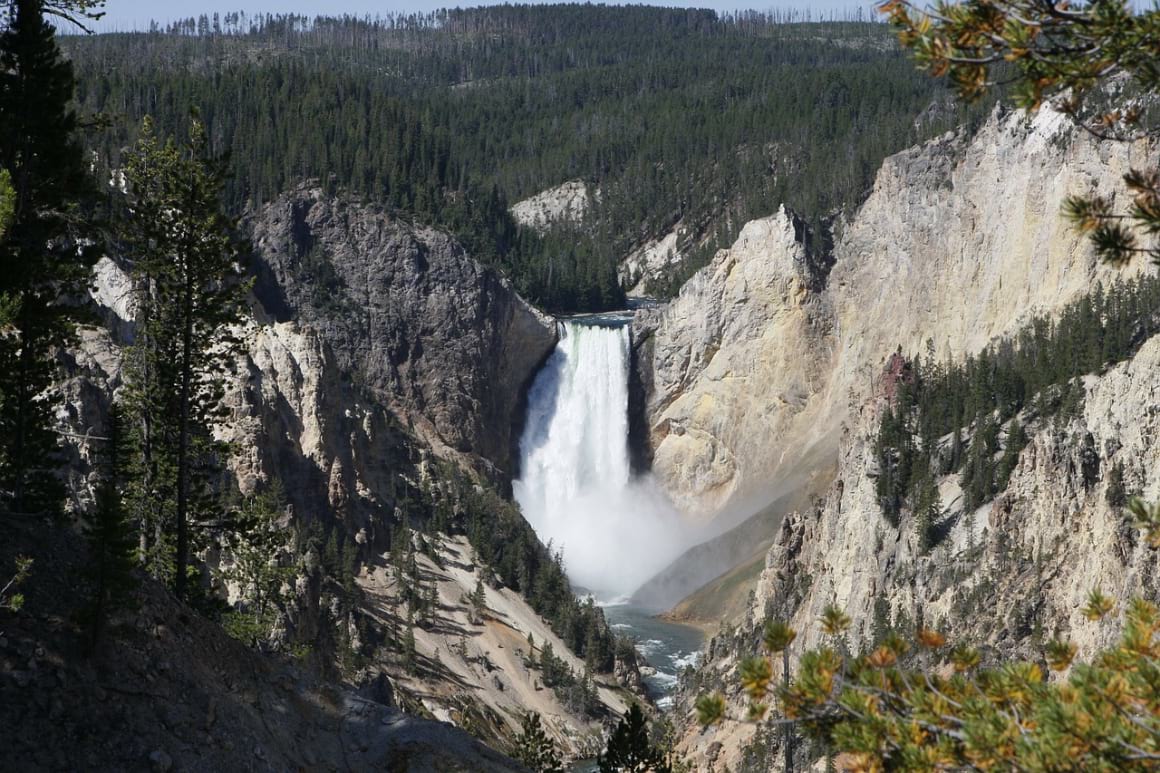
Artist Point is our pick for the best hike in Yellowstone if you’re looking for views. It is, after all, the park’s most famous viewpoint — and for good reason, let us tell you.
The mountainous landscape is arranged just right, making the scenery something you could stare at for hours.
The trail starts off at the South Rim Trailhead. You’ll be on the South Rim of the Grand Canyon of Yellowstone, with astounding views on both sides. Eventually, you’ll pass by the Upper Falls, and after a mile or so you’ll arrive at Artist Point itself.
Prepare yourself for breathtaking views. Savor the moment. You’ll soon realize why they call it Artist Point: this thing is a frickin’ piece of art!
Continuing onwards, and looping towards Lily Pond Lake, you’ll spot geysers and hear the rumbling of unseen bison. The scene expands.
Even though the hike is only a couple of miles, it sure packs a punch when it comes to the scenery you get to see. Plus, you’ve got parking available at the trailhead. And bathrooms, too!
- Length: 3.2 km
- Duration: 1 hour
- Difficulty: Easy/Moderate
- Trailhead: South Rim Trail Head (44°42’29.2″N 110°30’07.2″W)
8. Seven Mile Hole Trail – Off the Beaten Path Trek in Yellowstone
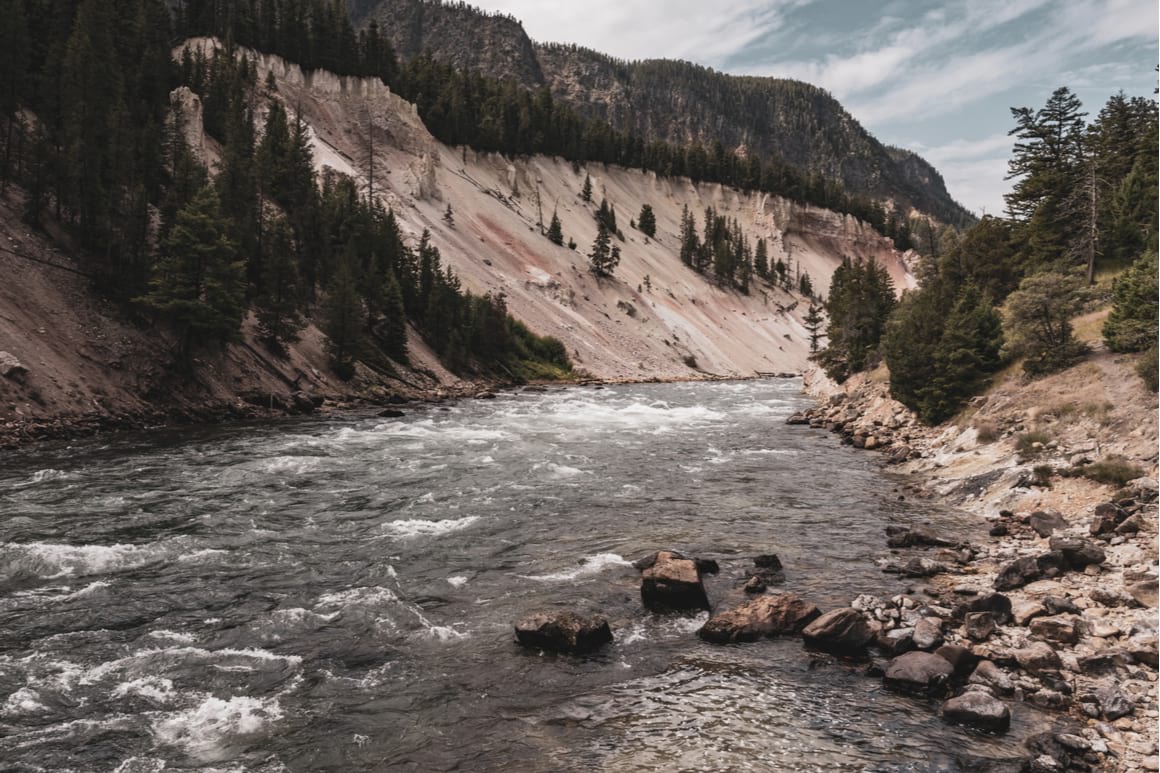
If you really want to get out into the backcountry and properly off Yellowstone’s beaten track, this is the hike for you. It’s well away from the more traversed routes and trails you’ll find elsewhere, so chances are you’ll count few (if any) other hikers along the way.
This right here, fellas, is some pretty damn good Yellowstone hiking. You’ll get to soak up the majesty of the park’s woodlands, challenge yourself, and see active vents and geothermal features along the way.
The journey starts alongside the Yellowstone River, joining the Washburn Spur Trail into the pine forests after a mile or so. Keep your eyes peeled for grizzlies on the slopes of Mount Washburn in the near-distance.
The path then drops into the canyon itself. There are a few sheer drops, so watch your step. And be careful of the dormant and active hot springs and vents, which can splutter at any time.
The billowing thermal area, the carpets of wildflowers, the lush meadows, and the mountain views… this hike is a real backcountry dream.
- Length: 15.5km
- Duration: 5 hours
- Difficulty: Difficult
- Trailhead: Inspiration Point (44°43’42.0″N 110°28’19.2″W)

Things go wrong on the road ALL THE TIME. Be prepared for what life throws at you.
Buy an AMK Travel Medical Kit before you head out on your next adventure – don’t be daft!
Buy on REINow that you’re clued up on all the hikes and how to go about them, there’s one crucial element left: figuring out where to stay in Yellowstone.
If you’re really going to make a proper visit, we recommend staying at least a few nights in the area. Just the idea of staying this close to the most iconic park in the US is a no-brainer!
There are a few great spots to base yourself around here. And all sorts of accommodation types, too!
West Yellowstone, for example, is a solid option. With its own airport, you can get vintage inns, lodge-style hotels, RV parks, and some chain hotels for something a little fancier. There are also a whole bunch of places to eat (and drink), as well as museums and other cultural thingies.
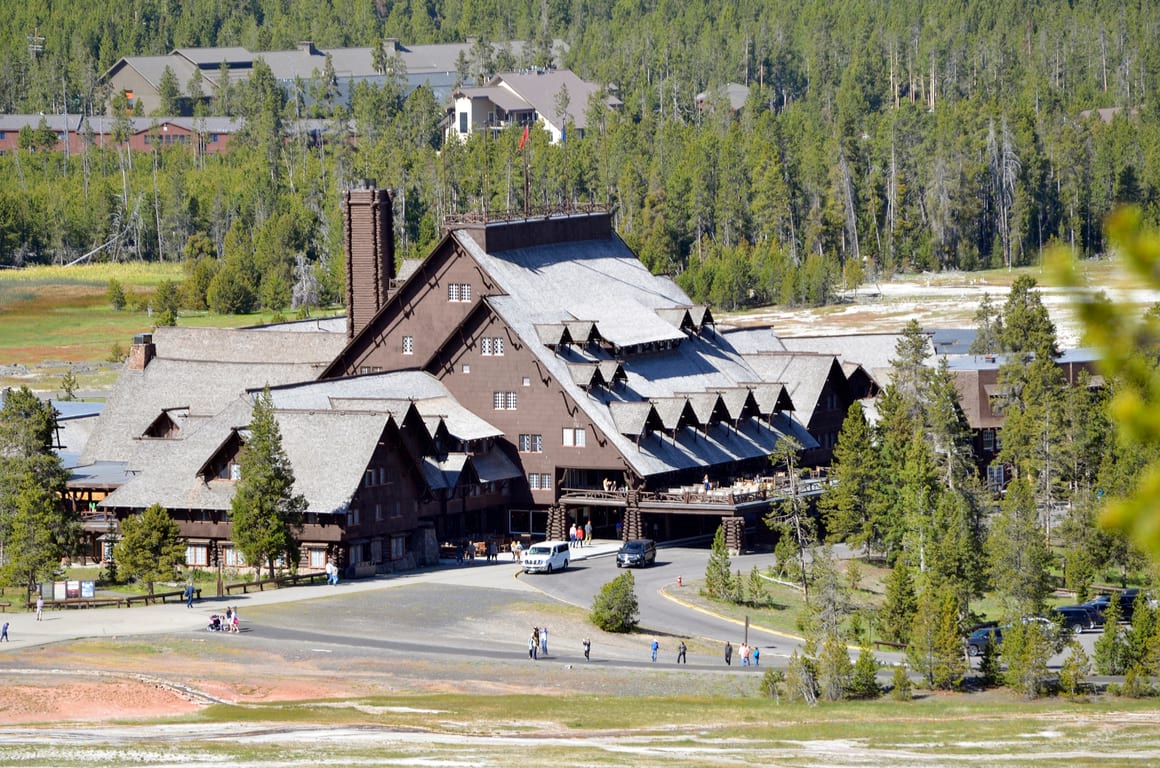
On Yellowstone’s northern boundary there’s Gardiner. It’s similar to what you can find in West Yellowstone, just smaller. However, the scenery is more beautiful around town. And the Yellowstone River runs through here, too!
When it comes to staying within the park, there are tons of places to camp and otherwise stay the night. Mammoth Hot Springs, for example, just south of Gardiner, has a great campground. At Yellowstone Lake, there’s a lodge and other camping opportunities.
Backcountry camping is arguably the best way to see it, though. There are 300 designated backcountry campsites, so you’ll be spoilt for choice if you really want to get out into the wilderness. You’ll need a permit, for which you can apply online.
Lavish Hideaway near Yellowstone – Alpenglow Villa
Ready to splash the cash? Airbnb Luxe is a premium range of vacation homes with a whole array of additional services on offer. This particular villa offers childcare, airport transfers, and spa services — among many other personalized offerings. It also comes with stylish interiors and an unbeatable location. Sleeping up to 16 guests, this is one for the big group ski trips!
Stylish Loft in Yellowstone – Mountain Lux
Planning a winter getaway? This luxurious mountain resort gives you easy access to both Yellowstone National Park and the big ski resorts! The rustic architecture gives the property a really homey vibe, while the modern interiors ensure you’ll have an incredibly comfortable stay. It also comes with a sauna and a massive hot tub. What’s not to love?
5 Star Lodge near Yellowstone – Eagle Ridge Ranch
This five-star lodge is the epitome of luxury near Yellowstone National Park! Nestled along the western boundary, it is within walking distance of some great hiking and cycling trails. Each guest has their own private cottage with a modern kitchen and spacious bedrooms. As part of Eagle Ridge Ranch, you can also book a variety of excursions with a special guests discount.

We’ve tested countless backpacks over the years, but there’s one that has always been the best and remains the best buy for adventurers: the broke backpacker-approved Osprey Aether and Ariel series.
Want more deetz on why these packs are so damn perfect? Then read our comprehensive review for the inside scoop!
View on OspreyHiking in Yellowstone is a right of passage of sorts for outdoor enthusiasts. It was the very first national park in the US, and trust us: it does not disappoint.
Before you go, though, it’s a good idea to think about what you’re gonna pack in that new sexy travel backpack of yours.
First, the shoes. This is number one thing you should worry about. Poorly fitting kicks can be dangerous, as the trails will require something more reliable. Consider investing in high-quality hiking boots if you can!
And don’t forget a water bottle. A filter water bottle gives you access to clean drinking water wherever you may be. It’s good for the environment too, so there’s no reason not to try one out.
Lastly, the first aid kit. You might think it’s over the top, but it’s always a good idea to be prepared when out in nature. You never know when you’re gonna need a plaster!
Throw a little jacket in your daypack, a few snacks, bear spray, and you’re ready to go. Here’s a list of the ultimate hiking essentials:
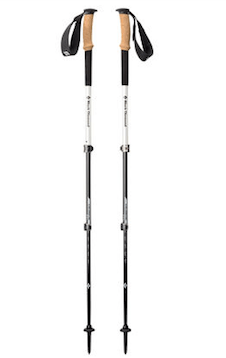
Black Diamond Alpine Carbon Cork
- Price > $$$
- Weight > 17 oz.
- Grip > Cork
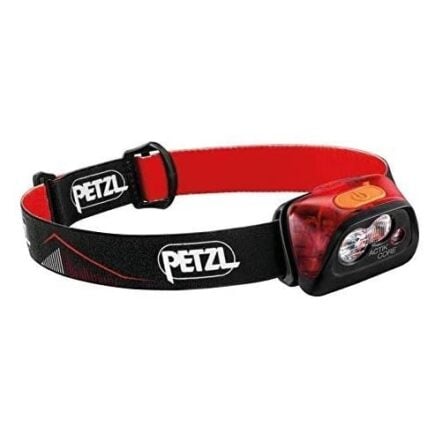
Petzl Actik Core Headlamp
- Price > $$
- Weight > 1.9 oz
- Lumens > 160
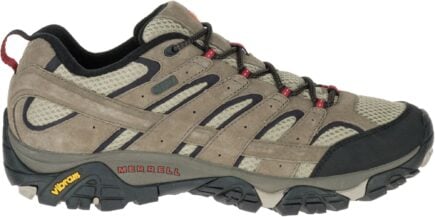
Merrell Moab 2 WP Low
- Price > $$
- Weight > 2 lbs 1 oz
- Waterproof > Yes
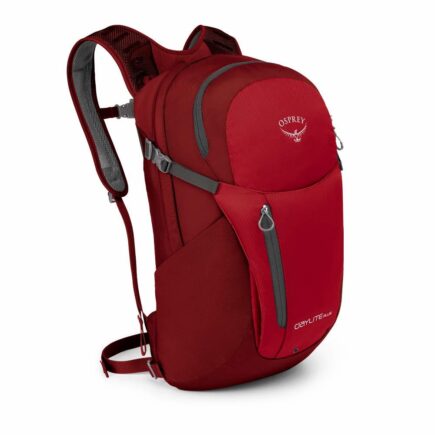
Osprey Daylite Plus
- Price > $$$
- Weight > 20 oz
- Capacity > 20L
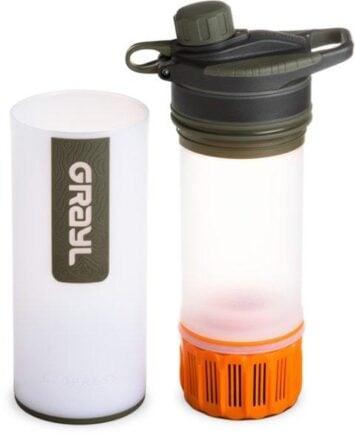
GRAYL Geopress
- Price > $$$
- Weight > 16 oz
- Size > 24 oz
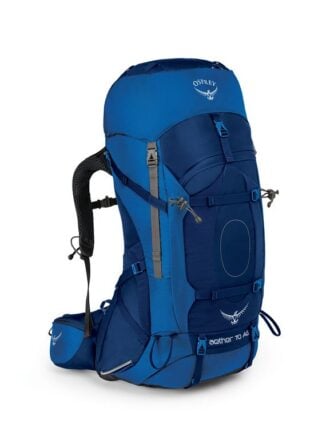
Osprey Aether AG70
- Price > $$$
- Weight > 5 lbs 3 oz
- Capacity > 70L
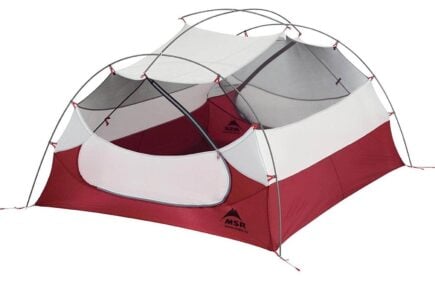
MSR Hubba Hubba NX 2P
- Price > $$$$
- Weight > 3.7 lbs
- Capacity > 2 person
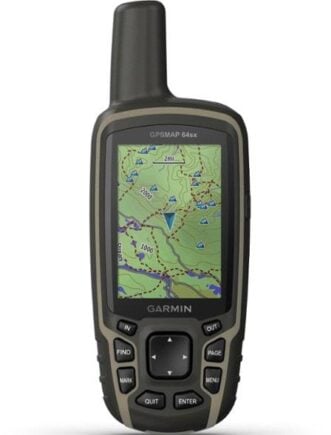
Garmin GPSMAP 64sx Handheld GPS
- Price > $$
- Weight > 8.1 oz
- Battery Life > 16 hours
Don’t Forget Your Yellowstone National Park Travel Insurance
ALWAYS sort out your backpacker insurance before your trip. There’s plenty to choose from in that department, but a good place to start is Safety Wing.
They offer month-to-month payments, no lock-in contracts, and require absolutely no itineraries: that’s the exact kind of insurance long-term travellers and digital nomads need.
SafetyWing is cheap, easy, and admin-free: just sign up lickety-split so you can get back to it!
Click the button below to learn more about SafetyWing’s setup or read our insider review for the full tasty scoop.
Buy Us a Coffee!
A couple of you lovely readers suggested we set up a tip jar for direct support as an alternative to booking through our links, since we’ve decided to keep the site ad-free. So here it is!
You can now buy The Broke Backpacker a coffee. If you like and use our content to plan your trips, it’s a much appreciated way to show appreciation 🙂




